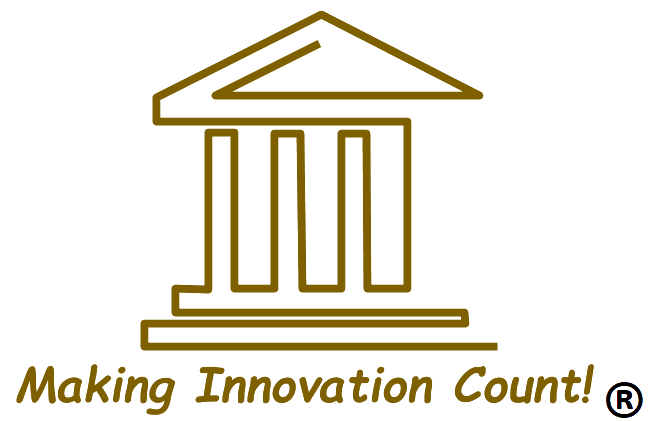|
Not all trademarks are created equal. The more distinct your trademark is the better it is. Trademarks that are more generic may need to be registered in the supplemental register instead of the more powerful principle register or worse yet simply be refused. Courts divide trademarks into five different categories, ranked by degree of inherent distinctiveness. Arbitrary, fanciful and suggestive trademarks are the easiest to protect, descriptive marks offer protection under certain circumstances and generic marks never offer protection. When contemplating a trademark for your business, you should always strive to choose (and register) trademarks that can comfortably fit into one of the three strong trademark categories. Fanciful Trademark: A fanciful trademark is made-up, invented for the sole purpose of functioning as a trademark. This is also called a neologism when it describes a single word. Kodak and Exxon are famous examples of fanciful trademarks. George Eastman, creator of the Kodak trademark, had some simple yet profound advice on what makes a good trademark: he said it should be short, vigorous, easily spelled and meaningless. I highly recommend his advice! There are websites that create made up words that you may use for your business. Search for "business name generator" to find them and have some fun.
digital world (insert your own lame “byte” joke here). In the case of less edible and more digital Apple, this choice of trademark (rumored to have been an impulsive decision based on a temper tantrum by the legendarily cantankerous Steve Jobs) actually has been quite costly. Apple had been established as a trademark by virtue of being the name of the Beatles’ record company (Apple Corps). As a result, Apple Computer has lost a couple of very costly court battles related to its foray into anything musical. Another example of an arbitrary trademark is the online retail giant Amazon. Many people probably don't know that Amazon is the name of the worlds largest river but even so there is no relationship between the two making Amazon a great trademark for the online retailer.
budget. Thus, owners of trademarks that walk the line between descriptive and suggestive obviously want to convince the trademark office that their trademark is actually suggestive. Another option is for owners to register on the supplemental register and wait five years to upgrade to the principle register.
Generic Trademark: A generic trademark can not be protected as a trademark because it describes a category of product or service. This is a matter of public policy; the federal government has determined that free use of such categorical trademarks benefits consumers. An example would be registering for a trademark "HAIR SALON" for your hair salon business. The trademark office will reject your application because many hair salons will want to use same words in their trademark.
5 Comments
 There are many levels of protection you may seek for your trademark and it can be confusing at times to know which will be best for your mark or the advantages or one over the other. In this post I review each of the five levels of protection to help you determine what will work best for your mark and business goals. Common-law Rights: Common-law trademark rights are the lowest level of right you may give your trademark. As soon as you start using your mark in commerce it is entitled to common-law rights. In common-law the first to use a mark in commerce has automatic senior rights over subsequent similar marks used in commerce. Advantages of common-law marks include:
However there are some disadvantages such as:
I don't recommend using this level of protection for important marks such as the name of your business, slogan, or key products. State Trademark Rights: The next step above common-law rights are state rights. You may file an application with your state to protect your mark at the state level. This will extend the geographical scope of your mark from the immediate vicinity of your business to the entire state. Advantages of state level marks include:
Disadvantages include:
Just as with common-law rights, I do not recommend filing for a mark at the state level. If you are going to go through the trouble of filing at the state level might as well spend the necessary money and file for a federal mark as there are so many benefits obtained from a federally registered mark. Federal Trademark Rights (Supplemental Register): A federally registered mark that is on the supplemental register gains some important advantages over a state registered marks such as:
Disadvantages include:
Federal Trademark Rights (Principle Register): A federally registered mark that is on the principle register has all of the advantages found with a mark registered on the supplemental register plus the following:
Federal Trademark Rights (Principle Register and Incontestable): This is the highest level of protection you may obtain for your mark. There are requirements that must be met in order to file for incontestable status but once filed the privileges remain with your mark for the life of your mark with a few exceptions. The advantages of an incontestable mark include:
I hope that this has been helpful. Please leave a comment below and I will try my best to respond with an answer.  The International Trademark Association (INTA) is a global association of trademark owners and professionals dedicated to supporting trademarks and related intellectual property in order to protect consumers and to promote fair and effective commerce. The Association's member organizations represent some 30,000 trademark professionals and include brand owners from major corporations as well as small- and medium-sized enterprises, law firms and nonprofits. There are also government agency members as well as individual professor and student members. To visit their website click here or their logo. From time to time the INTA issues bulletins on various topics all related in some way to trademarks. This bulletin, titled "The U.S. Trademark Registers: Supplemental vs. Principal" and written by Daniel M. Gurfinkel of Dennemeyer & Associates, reviews the differences between the two registers and the advantages of registration on the supplemental register. If you are dealing with with a USPTO Office Action on your application where the examiner is asking you to amend the application for registration in the supplemental register this bulletin will provide you with useful information to help you in making this decision. To read the bulletin click here. |
Categories
All
|
California, Inland Empire - (909) 566-2801
California, Santa Barbara - (805) 500-6241
Tennessee - (423) 226-8036
Georgia - (404) 436-0899
California, Santa Barbara - (805) 500-6241
Tennessee - (423) 226-8036
Georgia - (404) 436-0899




